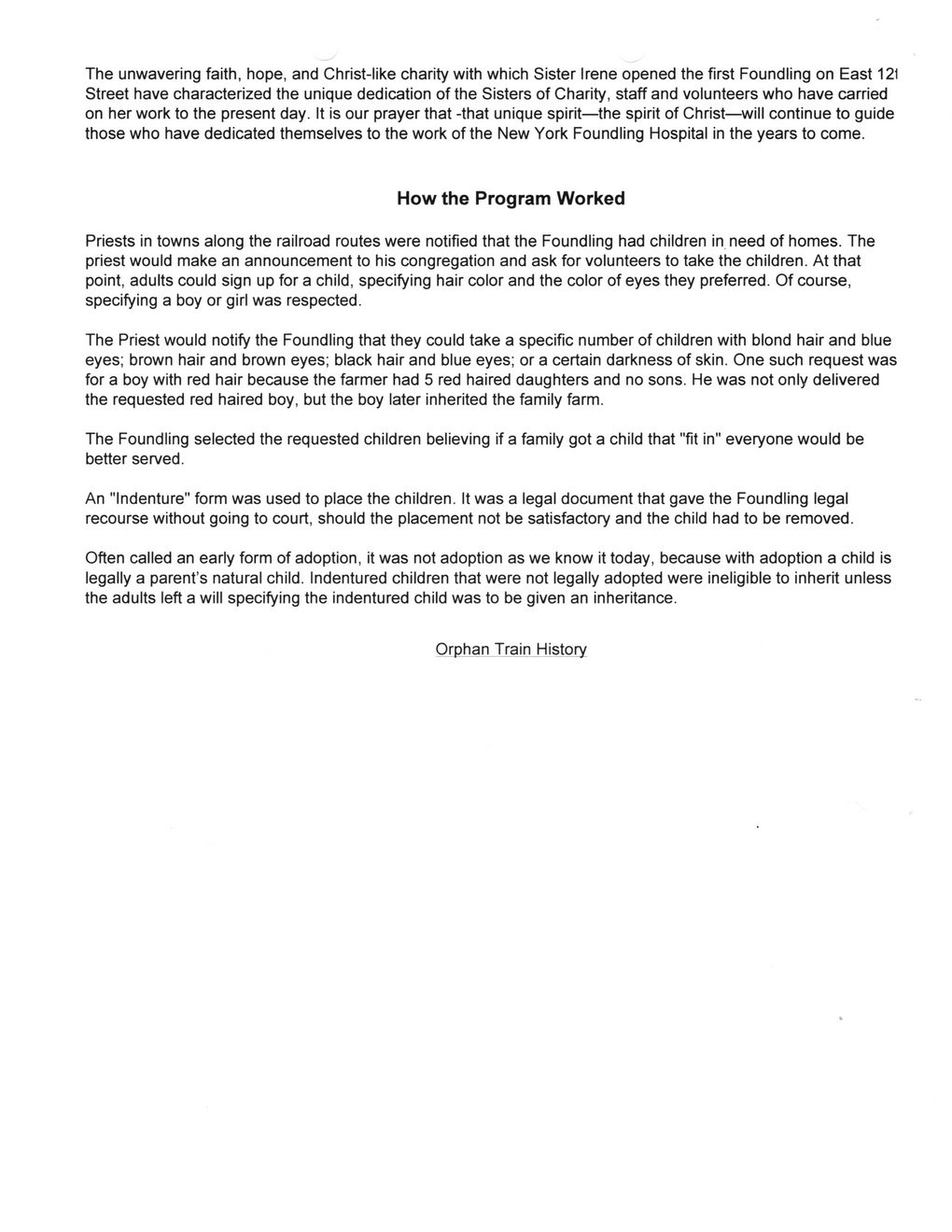This text was obtained via automated optical character recognition.
It has not been edited and may therefore contain several errors.
The unwavering faith, hope, and Christ-like charity with which Sister Irene opened the first Foundling on East 121 Street have characterized the unique dedication of the Sisters of Charity, staff and volunteers who have carried on her work to the present day. It is our prayer that -that unique spirit—the spirit of Christ—will continue to guide those who have dedicated themselves to the work of the New York Foundling Hospital in the years to come. How the Program Worked Priests in towns along the railroad routes were notified that the Foundling had children in need of homes. The priest would make an announcement to his congregation and ask for volunteers to take the children. At that point, adults could sign up for a child, specifying hair color and the color of eyes they preferred. Of course, specifying a boy or girl was respected. The Priest would notify the Foundling that they could take a specific number of children with blond hair and blue eyes; brown hair and brown eyes; black hair and blue eyes; or a certain darkness of skin. One such request was for a boy with red hair because the farmer had 5 red haired daughters and no sons. He was not only delivered the requested red haired boy, but the boy later inherited the family farm. The Foundling selected the requested children believing if a family got a child that "fit in" everyone would be better served. An "Indenture" form was used to place the children. It was a legal document that gave the Foundling legal recourse without going to court, should the placement not be satisfactory and the child had to be removed. Often called an early form of adoption, it was not adoption as we know it today, because with adoption a child is legally a parent’s natural child. Indentured children that were not legally adopted were ineligible to inherit unless the adults left a will specifying the indentured child was to be given an inheritance. Orphan Train History

Orphan Train Riders of BSL Document (033)